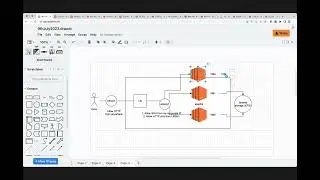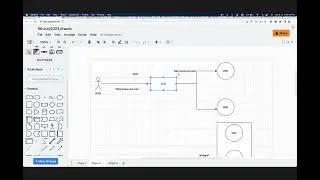CloudFormation Provision EC2 instance with code | Tech Arkit
AWS CloudFormation is a service that allows you to automate the provisioning and management of AWS resources through infrastructure as code.
Tech Arkit provides tutorials, reviews, news updates, and industry insights to help readers stay up-to-date with the latest technological advancements.
aws cloud practitioner, aws certified cloud practitioner, aws cloud practitioner exam, aws cloud practitioner essentials, aws practitioner certification, aws certified cloud
The AWS Certified Cloud Practitioner (CLF-C01) Complete Course Playlist
• AWS Certified Cloud practitioner (CLF...
Follow Us on Social Media
WhatsApp Group: https://bit.ly/TechArkitWhatsAppGroup
Join Telegram Group: http://t.me/linuxarkit 3000 Members Joined
GitHub: https://github.com/techarkit/
FB Private Group: 5K members / techarkit
Facebook: / techarkit
Twitter: / tech_arkit
Instagram: / arkit.co.in
Patreon: / techarkit
Website: https://arkit.co.in
Blog: https://techarkit.blogspot.com/
Reddit: / techarkit
Tumblr Blog: https://www.tumblr.com/blog/techarkit
Email: aravikumar48[at]gmail.com
Quora: https://www.quora.com/q/cxfarqipmxzaj...
Post your topic, we will make videos for you
https://forms.gle/M4ysoMNh1zsPXiw89
@aws @cloud @practitioner @techarkit
#aws #cloud #practitioner
AWS CloudFormation is a service that allows you to automate the provisioning and management of AWS resources through infrastructure as code. Here are some advantages and disadvantages of using AWS CloudFormation:
Advantages:
Consistency: With AWS CloudFormation, you can create and manage your infrastructure in a consistent and repeatable way. This helps ensure that your infrastructure is always in a known state and reduces the risk of configuration drift.
Speed: CloudFormation templates can be used to provision resources quickly, which can save time and reduce the potential for human error.
Scalability: CloudFormation allows you to easily provision and manage resources across multiple regions and availability zones, making it easy to scale up or down as needed.
Version Control: Infrastructure as code allows you to maintain version control over your infrastructure, which can help with troubleshooting and rollback in case of issues.
Third-party Integration: CloudFormation integrates with many third-party tools and services, such as Ansible, Chef, and Puppet, making it easy to incorporate your existing tools into your AWS infrastructure.
Disadvantages:
Complexity: CloudFormation can be complex and difficult to learn, especially for those who are new to infrastructure as code.
Debugging: Debugging CloudFormation templates can be challenging, especially if you have a complex infrastructure.
Limited Support: CloudFormation only supports a limited number of AWS services, which means you may need to use other tools to manage some resources.
Vendor Lock-In: By using CloudFormation, you become more tightly integrated with AWS, which can make it difficult to switch to another cloud provider in the future.
Overall, the advantages of using AWS CloudFormation outweigh the disadvantages, especially for those who need to manage complex infrastructures and want to maintain consistency and scalability across multiple regions and availability zones.


















